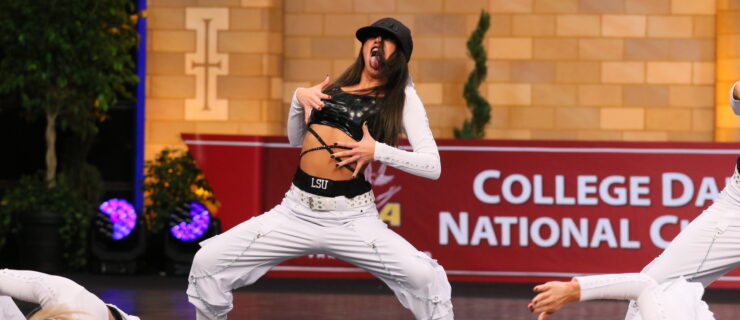Going It Alone: Competing Without Your Studio

You and 20 teammates have just hit the final pose of your production number. The audience—full of your studio’s supporters—is screaming its approval. You nailed it! Your team scurries into the wings, hugging and squealing in an excited huddle. You race to the dressing rooms, put on your matching jackets and head back to the stage for the awards ceremony.
Most competitive dancers are familiar with this scenario. However, independent competitors, like 12-year-old Alexis Strumolo, have found ways to take pleasure in being the ones nobody knows. Though she goes to competitions with her studio five to six times a year, she spends the rest of her time performing her acro and contemporary solos on her own, though under her studio’s name.
The idea of competing alone may seem scary at first, but it can be a great option for dancers who want more performance experience and learning opportunities, like Alexis. As an independent competitor, you have more control, choosing how often and where to compete. You also have the freedom to employ the choreographers you want. In short, it liberates you from having to rely on a teacher or studio owner’s decisions alone.
Having What It Takes
Jean Wenzel, a Headliners judge, says independent competitors are rare, but that those who take this particular leap tend to be serious about their craft. “Students who enter independently are often very strong technically and are usually trying intently to better themselves,” she says. That was the case for 20-year-old Dusty Button, currently a dancer with England’s Birmingham Royal Ballet. She spent eight years competing with her studio, Movin’ South, of Myrtle Beach, SC. But she also made the effort to enter competitions without her studio, particularly ballet competitions, such as Youth America Grand Prix. (Many competitive ballet dancers enter independently.) “I don’t think I ever thought to myself, ‘I want to compete independently,’ ” she says. “The decision was based more on the fact that I wanted more opportunities, more time on stage and more feedback. Waiting for those three competitions a year wasn’t enough for me.”
Competing independently can be a luxury for dancers who want more, as it was for Alexis or Dusty, or it can be a necessity. Amanda Viereck and Johnnie Taylor Trujillo say they were moved to compete independently after problems with their respective studio companies.
Amanda, a 19-year-old tapper and winner of Dance Spirit’s Cover Model Search in 2008, spent nine years competing with her Woodstown, NJ–based studio. But she says the group had a “falling out,” which prompted her to try competing on her own. “It was a bad circumstance and I wanted to get away from it, but I didn’t want to stop competing,” she says. Amanda says her first independent competition was her “aha moment”—the first time she allowed herself to “forget about everyone else and decide I was doing it for myself.”
Johnnie, a 14-year-old independent competitor from Socorro, NM, started competing with her local studio at age 7 but became an independent after just two years, when her studio company dissolved. “We started the year with a full competition team, but by Nationals we ended up with just me,” she says. Today, between classes and rehearsals, Johnnie trains an estimated 28 hours a week and spends roughly two weekends per month at competition, where she’ll run through up to 12 different solos each year.
Doing It for Yourself
Think you’d like to try competing on your own? Be prepared to work. Independent competitors may have more control, but they also have more responsibility. Amanda says self-motivation is key for any independent competitor because there’s no one pushing you to rehearse or meet registration deadlines. If you set out on your own, it will be up to you to do the research and find competitions that work for you. Independent competitors are not welcome at all competitions, but you should hit upon plenty that suit your needs. Amanda says she used DS’s annual competition guide in her search (see the October 2009 issue!).
Most independent competitors also have to find their own choreographers. Consider asking current and former dance teachers to help you, or try hiring dance majors from a local college. You might even find potential choreographers working with other dancers at your next competition.
Think Before You Leap
Competing independently can be a great opportunity for the right dancer, but it’s not for everyone. “If you are getting a good amount of training, and the training is helping you to improve, I would recommend staying with your studio [exclusively],” Dusty says. “If you do decide to go at it on your own, make sure this is what you want to do. There’s no point in leaving your studio just to compete on your own. If it’s not a great situation, then go for it, but if you have everything you need where you are, take advantage of that and stay!”



